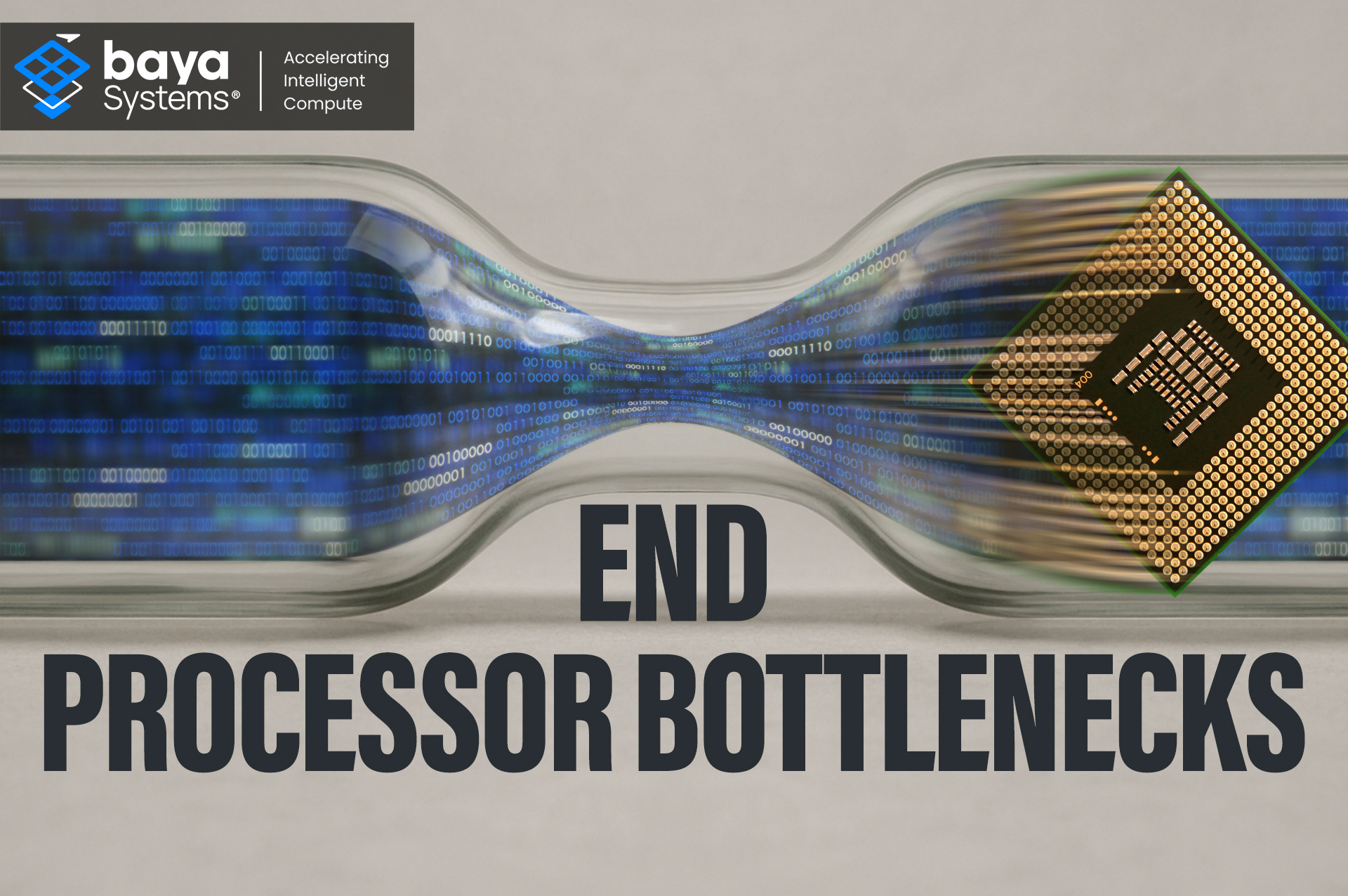Products
Solutions
Published
16 September 2025
Written by Luke Forster
Modern processors keep getting faster, but system performance is no longer limited by raw compute. Instead, the true bottleneck is data movement — how quickly information flows between CPUs, GPUs, accelerators, and memory. Baya Systems’ NeuraScale fabric is designed to solve this problem at both the die and chiplet level.
Why data movement limits performance
Amdahl’s Law reminds engineers that the slowest part of a system dictates its speed. For decades, CPUs have outpaced DRAM, driving cache hierarchies. Today, with parallel compute blocks driving AI and industrial workloads, the interconnect fabric has become the defining limiter. Nvidia’s NVLink illustrates the industry’s focus on bandwidth, but the same issue exists inside the chip itself.
From bus to fabric
For electronics engineers, a bus means I²C, SPI, or AMBA. These simple point-to-point protocols work well for attaching peripherals but collapse under the demands of many-to-many communication. A fabric, by contrast, is a Network-on-Chip. It connects multiple cores, caches, and accelerators with shared transport and routing logic, enabling concurrent communication across the die.
What NeuraScale changes
The Baya Systems NeuraScale fabric rethinks how on-die and inter-die interconnects are built. Traditional crossbars guarantee non-blocking connections but become difficult to scale. Mesh-based fabrics are easier to design but suffer variable latency. NeuraScale combines the two, making a mesh behave like a crossbar: scalable, tileable, and predictable.
Crucially, the Baya Systems NeuraScale design is chiplet-friendly. Instead of one monolithic die, engineers can build multiple smaller chiplets and link them with NeuraScale, gaining flexibility and reducing implementation risk. This is vital for telecoms and networking, where interconnect bandwidth requirements are growing towards 100 Tbps and beyond.
Scaling for the future
The market already demands switch fabrics that exceed 50 Tbps. With AI models expanding rapidly, throughput requirements will only increase. The Baya Systems NeuraScale approach allows engineers to scale both up and out, delivering the bandwidth needed without the overhead of handcrafted interconnects.
Enabling design engineers
For engineers, the benefits are clear: faster implementation, reduced design complexity, and interconnects that scale with workloads. The Baya Systems NeuraScale fabric ensures that SoCs and chiplet packages avoid data movement bottlenecks, enabling next-generation processor and AI systems to reach their true potential.
Comments are closed.

Comments
No comments yet